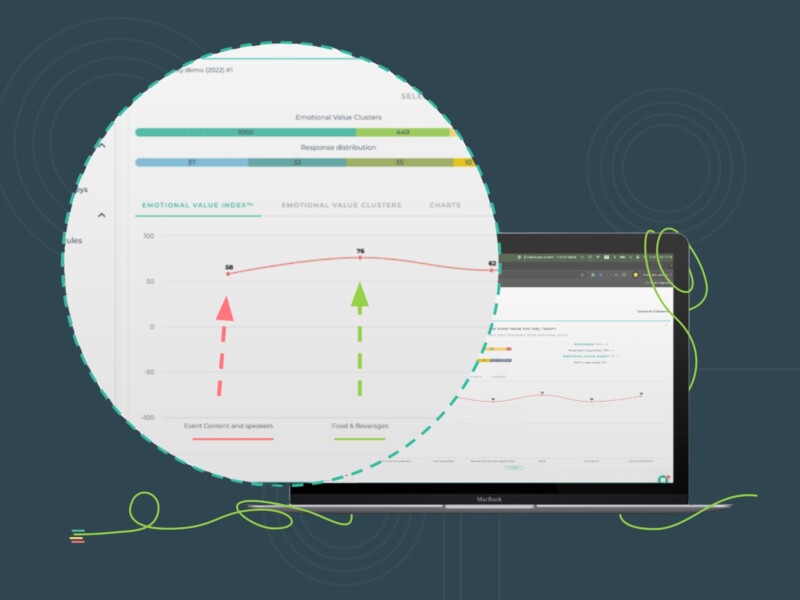Instead of relying on guesswork, impact analysis gives brands a clear picture of what improves your CX and what drags it down.
As businesses, we strive to make changes and improvements to our product or brand for better outcomes. They can be minute changes like the layout of the store or drastic changes like rebranding the business. Ultimately, the goal is to attract and retain more customers. But, how do we know that the changes we make to improve customer experience are, in fact, effective? We don’t want to go off-track by making changes that we assume are beneficial if, in reality, they do more harm than good. Here’s when impact analysis comes into play.
Let’s look at what impact analysis means in the context of CX and how it can help businesses avoid costly mistakes.
What is Impact Analysis?
Impact Analysis is the process through which you can identify the effect of a change within your business or in its solutions. Simply put, it helps brands clearly see what makes their CX (and overall business) better and what makes it worse. It analyzes both the positive and negative consequences of the change as well as the severity of such consequences.
Why Is Impact Analysis Important in CX?
So, what’s the role of impact analysis in CX? How does it help you strategize and deliver a better experience for your clients?
Align CX with Customer Feedback
Businesses often make changes and modifications with customers’ best interests at heart. Impact analysis allows you to assess whether your current processes are effective or whether past changes have delivered the intended positive outcomes, enhancing the overall customer experience of your brand.
By evaluating the results of these actions, you gain valuable and actionable insights into the pain points faced by your customers and the factors that drive or hinder their satisfaction. These insights empower you to refine your strategies and ensure they effectively address customer needs and preferences.
For example, imagine a retail brand introduces a self-checkout system to reduce wait times. Through impact analysis, the company discovers that while checkout speed improved (e.g. the EVI® score is high for “checkout speed”), some customers found the system confusing (e.g. the EVI® score is low for “easiness of use”), leading to frustration and abandoned purchases. This insight allows the company to implement better user guidance and training for staff, improving both the customer experience and conversion rates.
Additionally, by examining the outcomes of changes, you show customers that their feedback and experiences are genuinely valued. This reflective approach validates your efforts to improve their journey, fosters stronger relationships, enhances satisfaction, and ultimately builds long-term loyalty to your brand.
Better Risk Mitigation Strategies
Another major benefit of an impact assessment is that it helps brands be prepared with strong recovery strategies in case things go wrong. A brand may face unexpected issues from time to time. But, with anticipation and preparedness, you can be well-equipped to face them and even gain a competitive advantage against your rivals.
For example, conducting an impact analysis on website breakdowns can help you understand the potential loss of traffic, leads, sales, and the overall customer experience. By understanding the magnitude of the impact and how clients will react, brands can better prepare for website issues. This preparation helps minimize disruptions to the user experience. Additionally, brands can develop contingency plans, such as quick communication strategies and alternative shopping options. These measures ensure customer satisfaction and maintain trust during unexpected disruptions.
Measure the Success of Your CX Strategy
Does the CX strategy curated for your brand align with the preferences of your targeted customer? Metrics like NPS, EVI®, CSAT, and CES help you gauge the general experience of your brand. But, impact analysis can help you gain a clear understanding of the business impact of your CX.
Moreover, if your Net Promoter Score or EVI® score has changed following a change in the CX strategy, impact analysis can help you pinpoint the specific elements of the experience that influenced customer perceptions. It allows you to understand what worked and what didn’t, and how to adjust your approach to enhance overall satisfaction and loyalty.
To make performing impact analysis quicker and easier, we recently launched Feedbackly IQ – a next-generation AI analysis and insights tool designed to help you get the most out of your CX data. If you find impact analysis important and useful, it is definitely worth checking out the Feedbackly IQ here.



